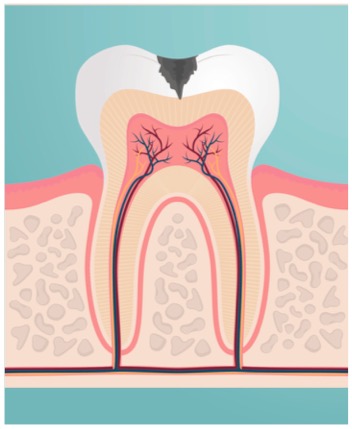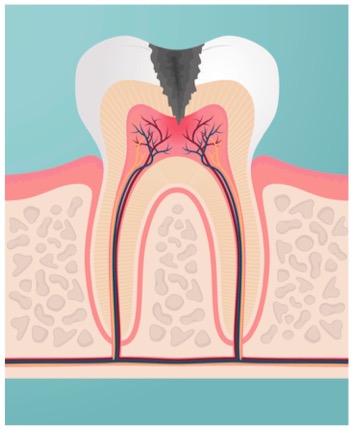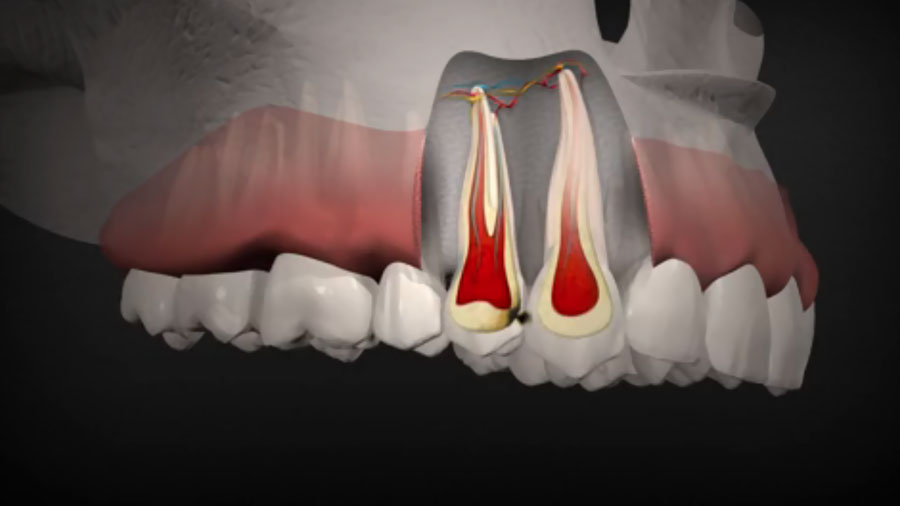Tooth decay and fillings
Fillings of the caries
The removal of the decay forms a cavity in the tooth. This cavity must be filled. The filling is the product that the dentist places in the tooth to restore its integrity. There are two main types of fillings: amalgams and composites. Amalgam fillings are gray in color and are made of an alloy of metals. Composites are made of plastic polymers and are designed to match the color of your teeth.
Definition of an incipient cavity

Caries to be treated
Then, if left unchecked, the decay will progress and destroy the dentin of the tooth. At this point, constant and thorough brushing of the teeth will not prevent the decay from progressing because the bristles of the brush will not reach the infected site.

Severe caries and dental infections
The survival of the tooth is seriously compromised when the decay reaches the pulp, causing pain. At this stage, root canal treatment is practically the only way to preserve the tooth without danger and/or pain later on.
In addition to the risk of losing the vitality of the tooth, the infection that has invaded the entire dental pulp can spread beyond it and form an abscess at the bottom of the root. The accumulation of pus in the abscess is actually a protective measure to prevent the infection from spreading.
Without the removal of the pus, symptoms will include swelling, fever and severe pain. If the tooth is too badly affected by decay, extraction of the tooth will most likely be the only treatment to allow the infection to drain away.

Causes of cavities
As previously explained, the main cause of tooth decay is the presence of plaque in the mouth. Certain habits can maintain a high propensity for the presence of plaque, despite the constant and beneficial action of brushing.
- Absorption of sugary liquids. Indeed, the sugar present in liquids such as soft drinks or even milk (lactose) remains in the mouth longer.
- Snacking between meals.Despite effective tooth brushing immediately after meals, it may not be sufficient if food is introduced into the mouth afterwards.
- The diet of acidic products. Even natural, some fruits such as oranges have a high acidity.
The most recommended effective methods for preventing cavities and maintaining good oral health are
- Brushing your teeth two to three times a day
- The use of dental floss
- The use of a toothpaste adapted to your dentition
- A dental examination and cleaning once or twice a year at the dentist
Differences between dental restoration materials
Tooth restoration can be done with different materials, some are more resistant, others have more attractive aesthetic properties. To restore teeth, dentists can use amalgam, composite resin, precious metal alloys or ceramic. The appropriate choice for your condition will be explained to you during your consultation.

